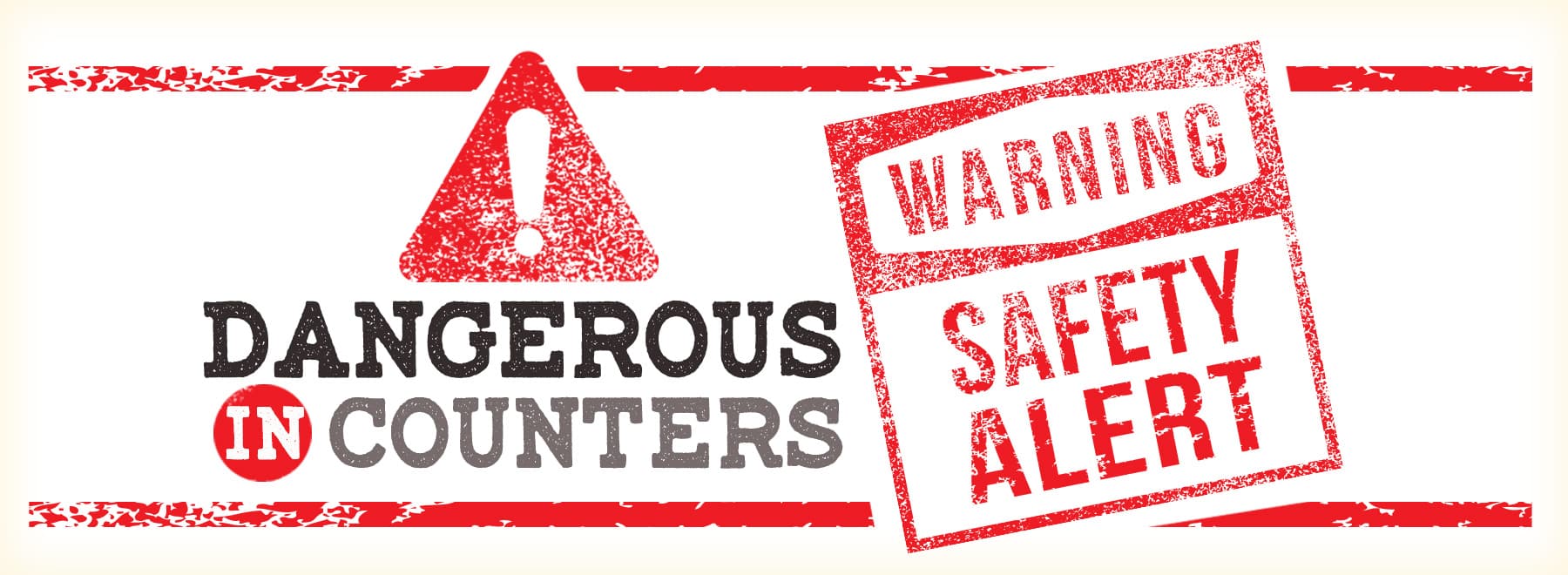Misusing household products can be hazardous to your health
The unfortunate story of the “Gorilla Glue Girl” - the Louisiana woman who sprayed her hair with a popular, strong adhesive with disastrous results - has captivated the Internet for weeks.
The unusual saga has become a “teachable moment” for those who might otherwise have considered using common household items, from bathroom and kitchen cleaners to hair care products and other toiletries, in creative ways that could bring harm to themselves and others.

Dr. Robert D. Cox, professor of emergency medicine and medical director of the Mississippi Poison Control Center, said some of the most dangerous substances people encounter can often be found on their bathroom shelves and in their kitchen pantries.
“Most products are designed to be used in a certain way,” Cox said. “If you follow the instructions, you’re generally safe. It’s when you use them for something they are not designed to do that bad things can happen.
“Probably the most dangerous things you and I have in our houses are drain cleaners and oven cleaner. Those both contain sodium hydroxide, potassium hydroxide or concentrated sulfuric acid. Contact with them in any way will cause burns. If a child gets that into their mouths, it can cause nasty burns going down into their esophagus and stomach. These are dangerous, but by no means are they the only ones.”
Cox lists dishwashing and laundry detergents among items that can cause bodily harm.
“Some of the dishwashing detergents also contain enough caustic chemicals so if someone were to ingest them, most of the time a child, they could cause harm,” he said. “A number of laundry detergent pods are soft, squishy and literally look like candy. Children have had severe outcomes for biting into these things.”

Dr. M. Brett Marlin, assistant professor of emergency medicine and assistant medical director of the Mississippi Poison Control Center, said combining certain household products could have serious unintended consequences.
“Unless you have an advanced degree beyond simple chemistry and basic science courses in college, unless you’re really familiar with chemical compounds, when you start mixing some of these under-the-sink cleaners, you don’t know what you’re going to make,” Marlin said. “A lot of chemicals by themselves are dangerous - they can cause chemical or thermal burns - but combining them could set off hazardous gasses."
While the COVID-19 pandemic has continued, many people have sought alternative solutions to protect themselves or simply to relieve boredom. Cox said as a result, harmful encounters with certain products have risen.
“Since the whole covid issue, we’ve seen an increase in exposures to hand sanitizers and other sanitizers used in the home,” Cox said. “Some of those have been from kids getting into them, but we have actually had a number of calls from people who go into the hospital and, while they’re in the patient’s room, they decide to drink some of the hand sanitizers.”
What would possess someone to throw back a swig of hand sanitizer? One simple answer: alcohol.
“They’re trying to use hand sanitizer as a cheap way to get alcohol to drink, but while most of the hand sanitizers don't contain methanol, some definitely do, and that is very toxic,” Cox said. “We’ve had a real problem with that all across the U.S. There are so many people now who are getting their hand sanitizers from the Internet, and a number of them may contain significant amounts of methanol.
“I have even had some people in the past who will try to drink certain products of mouthwash because it contains a fair amount of ethyl alcohol. Generally, a bottle of Listerine is cheaper than a bottle of hard liquor.”
Jenna Davis, managing director of the Mississippi Poison Control Center, said confusing the alcohol in certain hand sanitizers with liquor may not be as ridiculous as it sounds.
“When the pandemic began, there was a shortage of hand sanitizers, and some distilleries converted part of their production line to manufacturing hand sanitizer,” she said. “Some of those bottles do resemble vodka.”
Ingesting a substance, whether accidentally or intentionally, isn’t the only way to be harmed by household products. Even subtle contact could have detrimental results.
“Another common thing we have seen more of in the home since covid began is bleach exposure,” Cox said. “People think if you mix bleach with another cleaner, that can make it better. We have seen a number of cases of people mixing bleach with cleaners that contain ammonia or cleaners that contain sodium hydroxide or potassium hydroxide.
“When you mix bleach and ammonia you create a gas called chloramine. Bathrooms tend to be small in size, so when chloramine comes out, people can breathe it in and it can be very irritating to the lungs.”
The misuse of personal beauty products can be another source of dangerous contact issues, Cox said.
“A number of hair dyes require the hair to be bleached first to take the color out before putting the color back in,” he said. “These may contain high levels of peroxides - up around 12 percent - that can cause skin burns. If peroxide is left in too long, it can cause very serious scalp burns.
“The same thing can happen to those who use kits and don’t follow the directions really well. Professional hair stylists use this every day, they know what they’re doing and follow the instructions. But to save some money, people buy them on the Internet, and they may not know exactly what’s in them or follow the directions really well.”
Marlin said there’s a distinctive difference between nail polish remover and nail glue remover - and it can make a big difference.
“Nail polish remover contains acetone, which generally isn’t a problem,” he said, “but nail glue remover can result in elevated cyanide and cyanide toxicity if enough is ingested.”
Knowing where a product comes from could also be important in preventing harmful exposure, Cox said.
“Once you start buying these type of products off the Internet, you’re probably going to be dealing with products made in other countries, where they may not be regulated as thoroughly.”
One household product carries significant danger without being ingested or used improperly: the common plastic pill dispenser.
“A lot of times elderly people will have their medication in daily dispensers, plastic cases that are much easier for them to open than child-proof bottles,” Cox said. “Those are very good for helping older people take their medications on time, but kids can also get into them really easily when they’re lying unattended on a bedside stand or even in a purse.”
Whenever people do have questions about the possible misuse of a common household product, Cox advises them to call the Mississippi Poison Control Center immediately at 1-800-222-1222. He advises those who may be having an immediate negative reaction to the use of a product to call 911.
“If there’s any question about a product, take a second to write down the information on the label about what’s in it or take a picture of the label and bring it to the ER or give us a call,” he said. “If it’s something that you’ve encountered and you’re just concerned, call the Mississippi Poison Control Center. We can give you good advice and help figure out what the substance is that you’ve encountered.
“An ambulance ride and an ER visit costs a lot of money, and you may not need to go to the hospital.”
Davis said in general, Mississippi Poison Control Center staff follow up with callers later to make sure their situations have been resolved.
“People shouldn’t hesitate to call,” she said. “Even if it’s just a question about whether they should be concerned about a medication or a product, we’ll take care of them. The center is staffed with registered nurses, a nurse practitioner and a pharmacist who have a lot of knowledge and are here to help.”
So how can someone be sure to avoid becoming the next catastrophe to “blow up” the Internet? The bottom line: Before common sense fails, read the directions - and child proof your home.
“Keep small children away from just about everything,” Cox said. “They will see Mom or Dad going underneath the kitchen or bathroom cabinet to get something, and when no one’s there, they’ll go and take a look. Have locks so children can’t open your cabinets.”
“Read the labels,” Marlin said. “The labels are placed on products for a good reason - companies don’t put them there arbitrarily. Take your time to read the label, because you can glean a lot of good information that can save yourself a big headache.”
The above article appears in CONSULT, UMMC’s monthly e-newsletter sharing news about cutting-edge clinical and health science education advances and innovative biomedical research at the Medical Center and giving you tips and suggestions on how you and the people you love can live a healthier life. Click here and enter your email address to receive CONSULT free of charge. You may cancel at any time.



